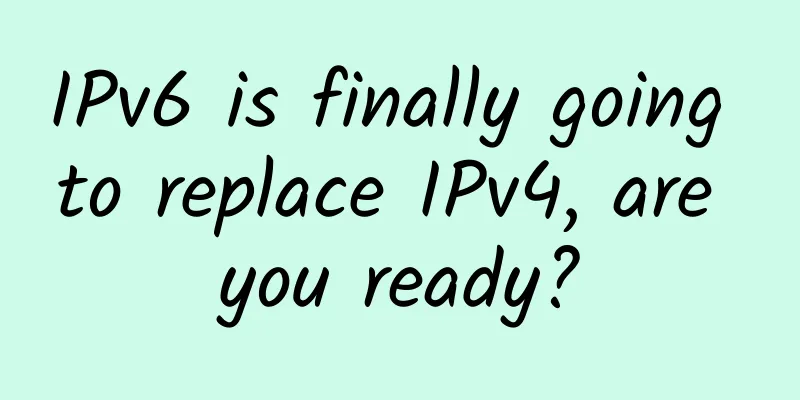5G is knocking on the door, but where is the infrastructure?

|
New Delhi: India is on the brink of the next generation technology, 5G. While telecom operators are demonstrating new use cases for 5G using trial spectrum, infrastructure readiness — fiberisation of sites and adequate number of towers — lags far behind the ideal scenario. To launch 5G services, at least 70% of towers need to be fiberised from the current 33%. According to experts, an estimated investment of Rs 500 crore will be required over the next four years to set up telecom infrastructure in terms of fibre and towers. For 5G to launch successfully, investments need to be made in network densification through the provision of fiber, small cells, and active infrastructure sharing. The government plans to auction 5G spectrum in the second half of this year. The industry has been demanding reasonable prices for 5G spectrum given the financial health of the sector, which has just three private operators after the merger. But at a time when data traffic is growing exponentially, infrastructure issues remain unresolved. According to Nokia’s MBiT annual report, 4G services account for 99% of total data consumption, while India’s mobile broadband subscribers have more than doubled to 765 million, and 4G data traffic has grown 6.5 times in the past five years. With the advent of 5G, data growth is expected to increase significantly. Fiberization of towers will be critical to carry the massive amounts of data once 5G launches. Fiberization connects cellular base stations to points of presence and the network core. It will seamlessly support the growing number of data users. Infrastructure issuesCompared to India, where 33% of towers are fiberized, South Korea has 65-70% of towers fiberized, while in the US, Japan and China, fiberization levels are 80-90%. In terms of fiber installed, India has far fewer fiber kilometers per capita (fkm) than several other major markets. China, with a population of 1.3 billion, has only one-tenth of the per capita kilometers, or 0.09, compared to India, with a population of 1.2 billion. In 2021, Japan and the US are ahead in this regard, with 1.35 and 1.34 kilometers respectively, according to Indian Infrastructure Research. The industry needs to invest more in key components of 5G networks, namely spectrum, fiberisation and pan-India coverage of towers. Given the precarious situation of a few, does the industry have the funds to invest? experts ask. According to estimates by the National Broadband Mission of India and the Cellular Operators Association (COAI), fibre infrastructure will require an investment of around Rs 22 lakh crore to fibre up 70 per cent of towers in the next four years, while setting up 15 lakh towers in the next four years will require an investment of Rs 25 lakh crore. "There is a need to spur investments in digital infrastructure for successful rollout of 5G. Currently, 34% of towers are fibred and the government needs to give a major push to at least 50% of sites to have fibre," said COAI Director General SP Kochhar. COAI is a telecom industry body representing telecom companies Reliance Jio, Bharti Airtel and Vodafone Idea, as well as telecom equipment makers such as Ericsson and Nokia. While fiber remains the ideal choice, telecom operators can use microwave backhaul because of its capacity and ease of deployment. Microwave backhaul refers to the transmission of voice, video and data between distributed sites and centralized points of presence over radio waves. Mobile network operator association GSMA said that in addition to V-band (60GHz) and E-band (70/80GHz bands), most telecom companies also rely on microwave backhaul solutions in the 7GHz to 40GHz band. “5G infrastructure requirements will be huge and we are still in the early stages of implementation. However, despite the hassle of rollout due to COVID-19, enthusiasm for 5G has increased significantly and we are taking steps in the right direction,” said Purushothaman KG, partner and telecom industry leader, KPMG India. Bharti Enterprises Vice Chairman Akhil Gupta recently said that 5G networks require strong infrastructure, especially fiberization of existing towers to 80-85% to handle the huge data traffic. “All these small cells will have to be almost 100% fiberized from day one, and there will have to be a massive increase in interstate, intrastate and intra-city fiber networks. The infrastructure required for 5G will be very different from the infrastructure required for 4G.” But apart from fiberisation, there are other hurdles before 5G sees the light of day in India. “Fiberisation is undoubtedly one of the key requirements for the successful deployment of 5G. However, given the meteoric growth in data usage and the impending deployment of 5G, fiberisation alone will not be enough to meet the infrastructure needs of large-scale networks,” said TV Ramachandran, President, Broadband India Forum (BIF). Purushothaman added that high spectrum costs are one of the biggest challenges facing the sector, which has seen its debt burden increase due to high spectrum acquisition costs and the need for network upgrades. Right of way policy is another big hurdle in deploying towers and laying fibre. “We have been working on aligning RoW rules with Indian Telegraphy RoW rules, 2016 and have been successful in many states. 33 states/UTs have notified their right of way policies as per RoW rules, 2016. Only certain cities like Delhi, Gujarat and Union Territories of Daman and Diu are still not aligned with Telegraphy RoW rules, 2016,” said Kochhar. In an effort to explore new ways of infrastructure deployment, telecom regulator TRAI has released a consultation paper on ‘Use of Street Furniture for Small Cells and Aerial Fiber Deployment.’ Street furniture like utility poles, billboards, lamp posts, traffic lights and public structures like pavilions, bus stops provide utility services to city dwellers with little or no changes and they can be used to install small cells and aerial fiber for providing telecom services as well. Small cells could be a solution to the infrastructure problem. “These are very densely packed small base transceiver stations (BTS) that can serve up to a few thousand users in an area of one square kilometer. These base stations need to be placed on public street furniture like utility poles, bus stops, neon signs, etc. Densifying a 5G network will require 5-10 times the number of small cells required for a 4G network,” Ramachandran said. 5G network infrastructure will need to support 10 times the bandwidth currently supported by 4G infrastructure. DIPA Director General TR Dua said that key government schemes such as BharatNet and Smart Cities will increase the demand for fiber deployment, requiring 100% fiberization of towers. To achieve this, the cable will have to be laid nearly 3.6 times faster than the current rate, from the existing average of 350 km per day to more than 1,251 km per day. “Fiberization is at the heart of 5G. As small cells become an essential component of 5G deployments, fiberized backhaul will be key. This approach will help deliver an enhanced end-user experience by increasing data speeds and eliminating the need for devices to compete for bandwidth,” said Dua. The way forwardIf 4G was about speed and delivery, 5G will be about creating experiences, providing a whole new set of options and revenue streams for telecom service providers. However, much will depend on spectrum pricing and infrastructure rollout. If we simplify the process of deploying small cells on street furniture, 5G will be successfully rolled out. Stating that this is a cost-effective solution, it will provide a ready environment for 5G network rollout, which is crucial to promote seamless connectivity in India, Kochhar said that adding RoW also requires immediate attention. “5G has the potential to connect the next billion users and fundamentally change the internet economics. It will be a flexible network that can adapt to changing industry and consumer demands for speed, reach and capacity. Service providers will need to achieve network densification and convergence, as well as establish a strong fiber-rich network backbone to build a viable 5G network architecture,” said Purushothaman. |
<<: From ServiceMesh to Decentralized SOA Bus
Recommend
The AI dual competitions will enter the final round in August. Huawei invites you to witness the birth of the champions of the DIGIX Geek Artificial Intelligence Campus Innovation Competition and the Algorithm Elite Competition!
[51CTO.com original article] This summer, two eve...
In the cloud-native era, F5 distributed cloud services help SoftBank build a modern application architecture
Today, applications are in a stage of explosive g...
IPv6 deployment speeds up, China enters a critical turning point in the game of network sovereignty
Cai Yiqun told reporters that the deployment of I...
After reading this article, my grandma understands the principle of HTTPS
Anyone who has surfed the Internet knows that the...
Shenzhen OCT InterContinental Hotel, Shenzhen Telecom, and Huawei jointly launched the world's first 5G smart hotel construction
InterContinental Hotel Shenzhen OCT, Shenzhen Tel...
CommScope’s Viewpoint: Operators’ Network Efficiency Transformation in the 5G Era
Despite the impact of the "black swan" ...
Virtono has a limited time 50% discount, Dallas/Romania KVM annual payment starts from 7.47 euros
Virtono has released a limited-time 50% discount ...
Big data architecture, use cases and benefits in IoT
1. Introduction In recent years, the "Intern...
IPv6, the savior of the Internet of Things industry?
On November 26, 2019, all IPv4 addresses were all...
Edge computing workloads: VMs, containers, or bare metal?
We live in an age of connected and smart devices....
The legend of network protocols (V): The shadow of a great power is hard to eliminate
Vinton Cerf's encounter with TCP/IP began in ...
RAKsmart August server flash sale starts at $30/month, VPS host starts at $1.99/month, new Hong Kong large bandwidth optional 100Gbps high-defense server
RAKsmart is a Chinese-run foreign hosting company...
Detailed explanation of several wireless transmission modes!
1. Access Point (AP) In this mode, the wireless n...
HostKvm 20% off: Korea/Hong Kong CN2 data center VPS monthly payment starts from US$7.6
HostKvm was founded in 2013. It currently provide...






![[Black Friday] Friendhosting 40% off, 13 data center VPS monthly payment starts from 1.8 euros](/upload/images/67cabcf83af92.webp)


